La Spezia cruise port guide
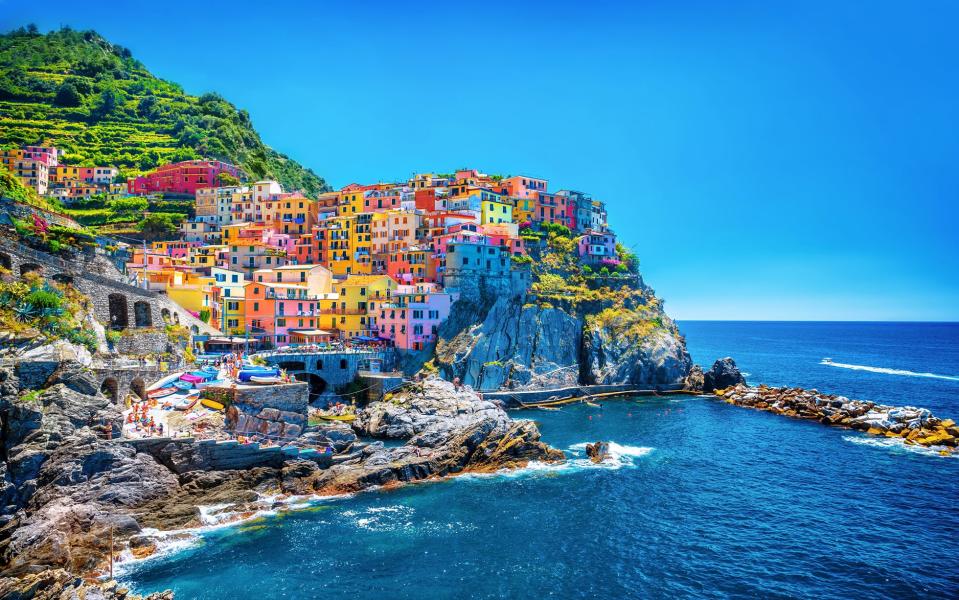
Why go?
La Spezia is one of Italy's most important ports and naval dockyards. Much of the town is modern, the result of wartime bombing, but in Viale Italia it has a pleasant, palm-lined promenade. La Spezia’s value to cruise passengers is as a second gateway after Livorno to Tuscany (Florence, Lucca and Pisa) and excursions to the coastal villages of the Cinque Terre.
Cruise port location
Cruise ships disembark on the Molo Giuseppe Garibaldi, midway along the Viale Italia waterfront. La Spezia’s railway station is off Via Fiume, 1.5 miles (2.4km) west of the Molo. A taxi is advisable, as the walk is along bland, modern streets.
Can I walk to places of interest?
It’s a mile (1.6km) to what is left of La Spezia’s old centre (centro storico) under the 13th-century San Giorgio fortress, but the city has little sightseeing. To get to the centre turn left from the Molo along Viale Italia and right up Via Armando Diaz near the end of the waterfront. If you travel to the Cinque Terre (see below), then walking the short distances around the tiny villages (with the exception of Corniglia) is straightforward.
Read more: Telegraph Travel's Mediterranean Cruise Guide
Getting around
You can take taxis to the five villages of the Cinque Terre (see below) – the nearest is Riomaggiore, 10 miles (16km) and 25 minutes’ winding drive – but the train service is easier and quicker.

Around 40 trains a day shuttle to, and between the villages: it is seven minutes to Riomaggiore from La Spezia (€4) and then one or two minutes between the other villages: Manarola, Corniglia, Vernazza and Monterosso al Mare. Buy a Cinque Terre Treno Card (€16) for a day’s unlimited train travel.
Highly recommended – because you can admire the cliffs and terraced coastline – is to travel between at least two of the villages by ferry (services are roughly hourly, except in stormy conditions; navigazionegolfodeipoeti.it). Board and buy tickets at any of the village docks (except Corniglia) or take a taxi to Portovenere, nine miles (13km) from the cruise terminal, to pick up the ferry at the start of its run.
Most cruise lines offer excursions or transfer-only trips to Florence, with a journey time of two hours or more one way, depending on traffic, which can be heavy in central Florence. Trains are a good option for independent travel to Pisa (one hour), where Pisa Centrale station is a mile (1.6km) from the Leaning Tower (take a taxi or LAM Rossa bus to the tower and walk back).
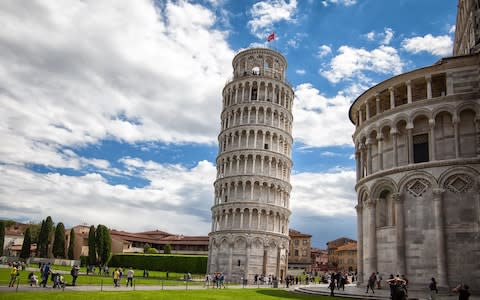
What to see and do
Pisa and Lucca are both sightseeing options, and Florence can also be visited. The closest – and best – excursion is to the national park of the Cinque Terre (parconazionale5terre.it), centred on five beautiful, colourful villages tucked into the cliffs and steeply terraced coastline north of La Spezia.
What can I do in four hours or less?
Pisa is manageable as a half-day trip, with enough time to see the Leaning Tower and the ensemble of historic buildings nearby. Given the tight timing, however, it makes sense to join an excursion rather than attempt the trip independently.
Much the same goes for the Cinque Terre, though it’s worth noting that most operators use the same trains and ferries as you would independently. If you travel on your own, then it is a 10-minute taxi ride to La Spezia’s station and about the same again by train to Manarola, the second of the villages.
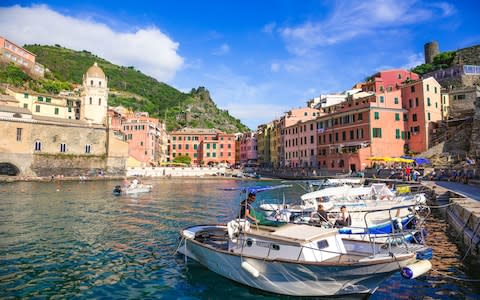
Spend around an hour in Manarola, depending on ferry timings, and then take the ferry to Vernazza (15 minutes), the fourth of the villages. Corniglia, the third village, is on a hill and is not served by boat, and from the station there are 300 steps, for which reasons this is the quietest of the villages.
Vernazza’s little waterfront square is great for lunch, while the village behind – basically a single street – and a stroll up to the old watchtower, need only take 40 minutes.
If the timings work, you could continue by boat to Monterosso (15 minutes), the fifth, largest and (relatively) the least quaint of the villages, and catch the train back to La Spezia (14–21 minutes). Monterosso is divided in two: a newer part by the station and (turn left along the waterfront) the old village 10 minutes’ walk away. Or spend longer in Manarola and Vernazza and return by train from the latter.
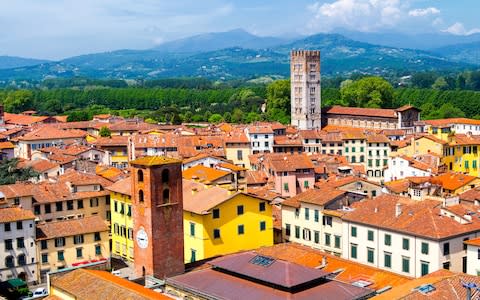
What can I do in eight hours or less?
Eight hours is plenty to get a taste of the Cinque Terre, and you should feel confident about making the trip under your own steam. With so many trains, and journey times so short, you can easily add to, and refine the four-hour itinerary above. One option for fit walkers would be to follow the well-worn hiking trail between Vernazza and Monterosso (small fee to use trail; around three hours), though this is a “proper” hike, so take water and wear proper footwear. Extra time on the ferry is also worthwhile for the views: total journey time from Portovenere to Monterosso (or back) is one hour and 20 minutes.
The temptation from La Spezia is to visit Florence, but whether you travel alone or on a tour, half or more of your eight hours will be taken up with transfers by train or road. Road transfers to Pisa and Lucca take an hour, and 1 hour and 35 minutes by train to Lucca. The quickest trains to Pisa take just 37 minutes (with more than 30 services daily), making this manageable as an independent day’s excursion.
A more unusual, but fascinating, full-day guided excursion is to visit the white marble quarries above Carrara, the source, among things, for the stone for Michelangelo’s David. Cinque Terre Tours (cinqueterretour.it) offers tailor-made tours that can combine half days in Lucca or Pisa.
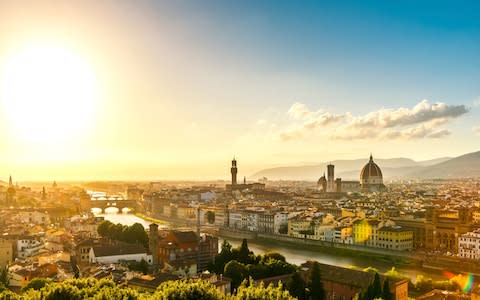
Eat and drink
La Spezia and the Cinque Terre are especially known for their mussels (cozze), and in particular stuffed mussels (cozze repiene). The region is also renowned for Italy’s finest fresh anchovies, best eaten (preferably in Vernazza) as tegame di acchiughe, a dish that combines the fish with potatoes and fresh tomatoes. Wash any meal down with a glass of light white wine from the Cinque Terre’s terraced vineyards.
Don’t leave without…
Liguria is known for its excellent olive oil – many consider it better than Tuscany’s. Wine is also a good buy, especially the Cinque Terre’s unique Sciacchetrà dessert wine and whites such as Vermentino. You may also find local ceramics for sale, notably in Manarola.
Need to know
Flight time
The nearest airports to La Spezia are Genoa, 69 miles (111km) to the north, and Pisa, 52 miles (83km) to the south. British Airways (ba.com) and Ryanair (ryanair.com) fly direct to Genoa and Pisa from London airports; easyJet (easyjet.com) flies to Pisa from Gatwick. Flying time to both is two hours and 10 minutes. Rail connections to La Spezia from both airports are good (trenitalia.com).
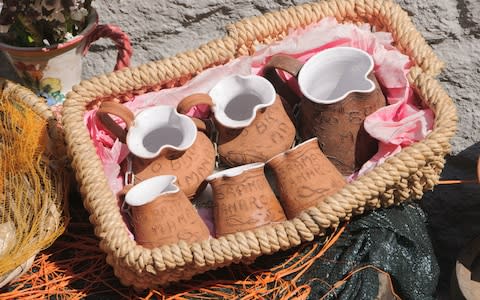
Safety
Pickpockets are a severe problem on the teeming platforms and crowded trains to and between the villages of the Cinque Terre. Be especially vigilant getting on trains and if you are forced to stand.
Best time to go
La Spezia and the Cinque Terre have a mild microclimate, so early spring and autumn visits are often lovely. May to September and weekend excursions will be crowded.
Florence and Pisa are busy almost year-round, but especially at weekends. Lucca is less visited. July and August are uncomfortably hot for city sightseeing.
Closures
State galleries and museums often close on Mondays, which is also the most common closing day for restaurants, many of which are also shut on Sunday evenings.

